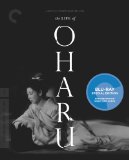| Reviews & Columns |
|
Reviews DVD TV on DVD Blu-ray 4K UHD International DVDs In Theaters Reviews by Studio Video Games Features Collector Series DVDs Easter Egg Database Interviews DVD Talk Radio Feature Articles Columns Anime Talk DVD Savant Horror DVDs The M.O.D. Squad Art House HD Talk Silent DVD
|
DVD Talk Forum |
|
|
| Resources |
|
DVD Price Search Customer Service #'s RCE Info Links |
|
Columns
|
|
|
Life of Oharu: Criterion Collection, The
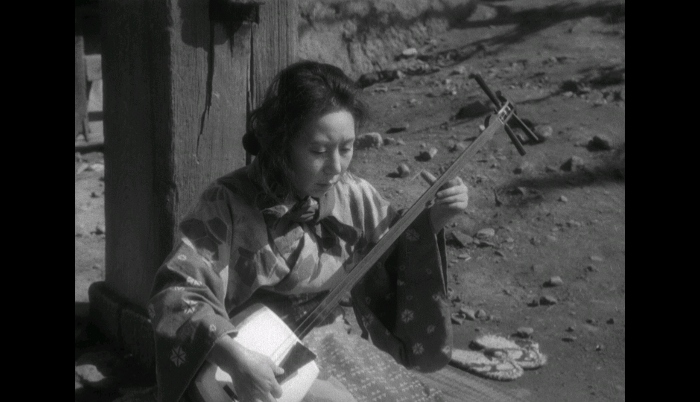 What makes a movie worthwhile, or at least worth watching? Within the boundaries of drama, most folks need one or more characters to care about, root for and empathize with. There's a transparent reason why countless stories revolve around characters beating long odds: it's to reassure us that hard work, perseverance and a shred of luck can help us overcome the smaller obstacles in our less dramatic lives. Of course, things don't always turn out that way: sometimes life beats us into submission, and it's those end-of-our-rope moments that truly define who we are as people. Some quit, and some keep going. Oharu, played by Kinuyo Tanaka, is the center of Kenji Mizoguchi's 1952 film; with few exceptions, she seems to be treading water in an ocean. [SPOILERS AHEAD] We're introduced to Oharu as a middle-aged prostitute, far removed from her high class upbringing; soon enough, we see how everything went wrong. When the young Oharu's tryst with lower class Katsunosuke (Toshiro Mifune) is discovered, her family is banished and her lover is beheaded. She tries to end her life, fails, and lives in poverty with her parents. Things momentarily look up when Oharu's beautifully distinct features suit the needs of Lord Matsudaira (Toshiaki Konoe), whose wife (Hisako Yamane) is unable to bear a son and whose sickness has left her with a secret she disguises from him. Jealous rage consumes her and Oharu is victimized yet again, both by Matsudaira's wife and the lustful Lord. The downward spiral continues as Oharu is married, widowed, rejected as a nun and becomes a prostitute. Her dismal story has come full circle. [END SPOILERS] The Life of Oharu is not a hopeful film by any stretch. There's not much room to breathe as the woman's life tumbles out of control and, for better or worse, we're not allowed to breathe with her. Unfortunately, each successive tragedy feels a bit more manipulative than the last: characters and situations don't get much time to sink in or develop much weight before we're rushed away to the next tragic turn of events. We're numb to these brief, shocking events long before the curtain closes, unable to support a character that seems to exist only to make us upset on her behalf. On one hand, then, The Life of Oharu isn't quite detailed enough to make us fully appreciate the depth of her broken life. On the other hand, who should want to subject themselves to another 30 minutes of laborious, emotionally suppressing misery? This dark cloud looming overhead doesn't make The Life of Oharu a bad film, just one that's much easier to distantly appreciate than actually enjoy. Visually, it's beautiful and easy to get lost in: artfully framed compositions, solid production design and a suitably fragile atmosphere are but a few sensory strengths. Yet only the most dedicated and patient fans of Mizoguchi's output will be be able to watch it more than once or twice, as the cold and distant treatment of its central character feels more like a provocative retort than a compelling, reasoned statement. There's a message here, but we're beaten with it. Criterion's solid Blu-ray treatment of The Life of Oharu, along with its admittedly strong visual merits and the considerable name value of its cast and crew, will help to bolster its place in Japanese film history. For obvious reasons, though, the polarizing story only makes it worth a purchase for established fans.
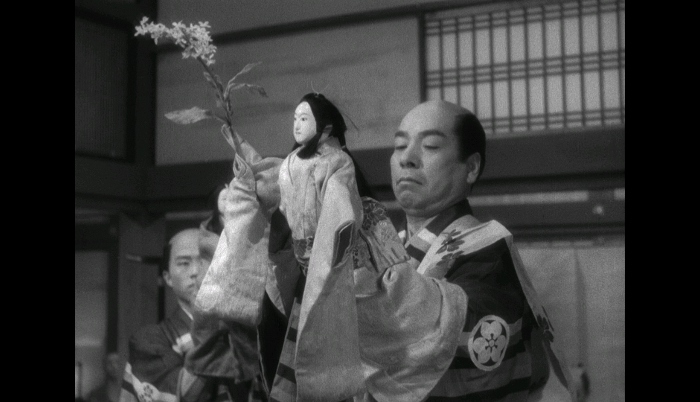
Not surprisingly, The Life of Oharu's haunting appearance is rendered nicely on this solid 1080p transfer. It's important to understand that the source material (which included a master positive struck from the original camera negative, as well as a duplicate negative of the first reel) was obviously in rough shape, as the film's relatively fragile appearance almost feels like it will tear apart at the seams on occasion. Fades and other scene transitions are especially rough, while other defects like vertical lines, flickering black levels and debris can be spotted on countless occasions. Other portions of the film look terrific: daytime outdoor sequences, for example, display excellent detail and clarity. Overall, The Life of Oharu still looks quite striking, and the strengths of this restoration undoubtedly outweigh everything else.
DISCLAIMER: These promotional images are strictly decorative and do not represent Blu-Ray's native 1080p resolution. The Japanese LPCM 1.0 mono track is perfectly acceptable overall, as neither the dialogue nor Ichiro Saito's original music fight for attention. A few light hisses and pops can be heard along the way, but it's nothing major and the studio undoubtedly did what they could to clean up the fragile source material. Optional English subtitles are presented during the main feature for Japanese audio translation only.
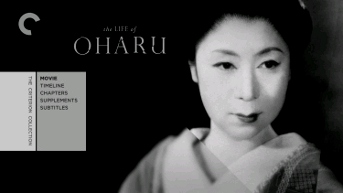 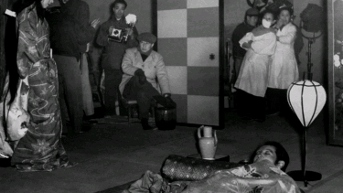
The Life of Oharu's bleak, oppressive tone will not sit well with many viewers, as the non-stop tragedy hoisted upon its central character frequently borders on the ridiculous (especially after 137 minutes). Even so, Mizoguchi's steady hand keeps the film grounded during many scenes that might otherwise drift into black comic territory, while the beautifully dark compositions consistently remain perfectly suited to the subject matter. Criterion's Blu-ray package serves up a fine A/V presentation, all things considered, but the relatively brief bonus features and limited replay value make The Life of Oharu a recommended purchase for die-hard fans of the director only. Everyone else should try before they buy. Rent It.
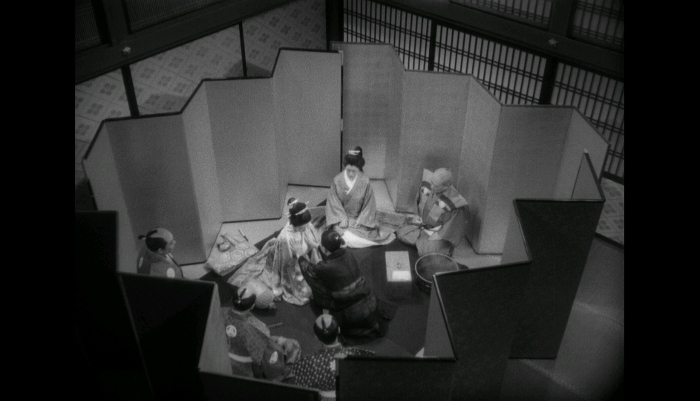 |
|
| Popular Reviews |
| Sponsored Links |
|
|
| Sponsored Links |
|
|
| Release List | Reviews | Shop | Newsletter | Forum | DVD Giveaways | Blu-Ray | Advertise |
|
Copyright 2024 DVDTalk.com All Rights Reserved. Legal Info, Privacy Policy, Terms of Use,
Manage Preferences,
Your Privacy Choices | |||||||









